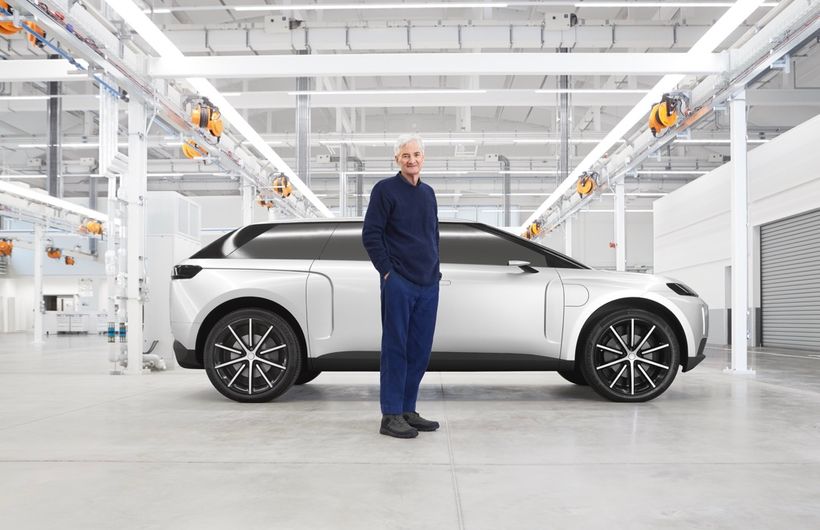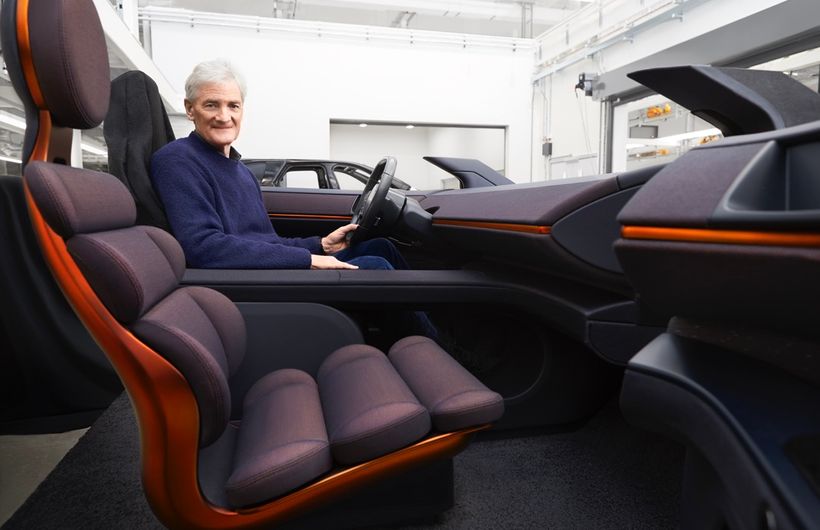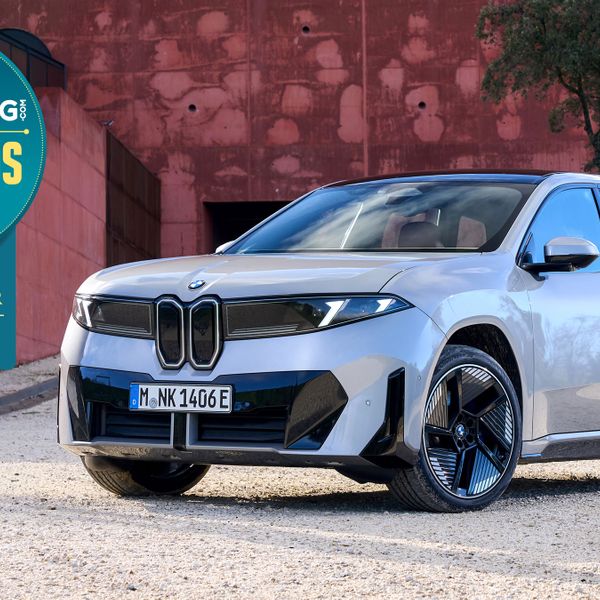Back in 2017, Dyson announced that it had been secretly working on a “radical and different” electric car, aimed for a launch in 2020. But, just two years later, in October 2019 and after sinking half a billion pounds into the project, Dyson pulled the plug. So, what went wrong?
It certainly wasn't a lack of investment. Dyson made bold moves in trying to make it a success – including recruiting proven talent from the automotive world and buying up land and buildings at the disused Ministry of Defence airfield at Hullavington, Wiltshire.
Two hangars at the site were quickly renovated to serve as the base for Dyson’s automotive program, with further plans in place to build a 10-mile test track for R&D use. At least 400 staff were working on the electric car project before it’s demise. Now, though, the Hullavington location is being used for work on “air treatment technologies and robotics”.
![Dyson electric car, silver, side on, in workshop, with James Dyson]() Dyson is rumoured to have sunk at least £500m into the project (all pictures courtesy of Dyson)
Dyson is rumoured to have sunk at least £500m into the project (all pictures courtesy of Dyson) Up until the project was cancelled, Dyson kept the details of their car closely guarded, but it has since revealed the key specifications the engineers were working towards and shown what the interior and exterior of the car would have looked like.
The car, codenamed N526, was to be a large seven-seat SUV promising a huge 600-mile range and 150 kWh battery. From the very outset, Sir James Dyson made it clear that the car wouldn’t be aimed for the mass market and that it “would not be cheap”.
We now know that plans were to produce 5000 cars per year initially, with a base price of £150,000. Dyson’s products are widely known to be targeted at the premium-end of their markets, usually with rather large price tags. Evidently, the N526 was set to follow this pattern, with a price almost double that of a Tesla Model X or Lotus Eletre.
One of the distinctive design features of the N526, aside from its Range Rover-esque 5 metre length, is the enormous 24-inch wheels, which are said to offer advantages in both efficiency and ride comfort.
While the exterior of the car is pretty good looking, albeit quite conventional, the interior is where things get more interesting. Fed up with modern car seats, Sir James made it his mission to design seats that would provide posture support in all the right places.
![Dyson electric car interior styling buck with James Dyson]() Sir James was obsessed with seat comfort
Sir James was obsessed with seat comfort To maintain a minimalist aesthetic and allowing the driver to keep both hands on the wheel as much as possible, Dyson opted to have all the interior buttons and switches on the steering wheel. A heads-up display also adds to the modern feel that Dyson were trying to achieve.
Dyson was determined to deliver a car with a 600+ mile range, despite the weight disadvantage of lugging around a huge 150 kWh battery pack – which contributed to an expected kerb weight of around 2600 kg. The company was banking on being able to reduce the weight of the car significantly as battery technology progressed and formats with a better capacity-to-weight ratio became available.
The car was designed to have two 246 bhp motors sending power to all four wheels to give a 0-60 mph time of under 5 seconds. Dyson was very proud of the fact that the motors and control systems were all of original design, and that they hadn’t tried to “borrow parts from other manufacturers”.
![Dyson electric car, dark blue, in studio]() Dyson was proud that the car used parts of its own design - but the cost killed it
Dyson was proud that the car used parts of its own design - but the cost killed it So, what killed off the project? Well, trying to design and build a car from the ground up without borrowing parts from other manufacturers is a very expensive exercise. And, even with the hefty price tag, Dyson eventually realised that the car was not going to be commercially viable. Part of the problem, according to Sir James, was that existing car makers can sell electric cars at a loss and offset it with their profits from selling traditional cars, effectively pricing the Dyson car out of the market. The obvious exception to this rule is Tesla, although even this success story needed a lot of investment to make it a profitable company.
It’s clear that Dyson set their sights very high and weren’t prepared to compromise on their vision by sharing parts or tech with another company. Nevertheless, it’s obvious that an enormous amount of passion went into the venture and that its early end wasn’t due to a lack of trying.
![Dyson electric car, silver, in studio]() Could the Dyson have cleaned up in the luxury SUV sector?
Could the Dyson have cleaned up in the luxury SUV sector? Shades of Sinclair?
Dyson isn’t the first valiant but vain effort to crack the electric transport market. Sir Clive Sinclair, also a successful tech entrepreneur, went on to found Sinclair vehicles in 1983 to fulfil his childhood vision of creating clean electric cars.
His plan was to build a whole range of cars, but it started at the bottom with the left field Sinclair C5 – a single occupancy trike which promised to be a compromise between a car and a bicycle.
Ultimately, though, it proved to have much of the worst of both worlds: little to no protection from the weather, but without the manoeuvrability of a bike.
It was not short of innovation, with a tough plastic body and engineering by Lotus. Power was from a 12v lead-acid battery similar to those fitted in (conventional) cars, fed to a converted washing machine motor. The claimed range was 20 miles, but the reality was nearer 10, especially if the driver didn't pedal and it was cold outside.
The press were sceptical, and so were the public. Only a few months into its life, C5's where being sold off at half their original £399 price to clear stocks and production was halted. It became one of the most well-known marketing flops in recent history and Sir Clive shrunk into the shadows.
What might have happened if Sinclair launched the C10 - a planned two-seat city car - first? We'll never know.
![]() The C5 was meant to be the first in a whole range of Sinclair electric cars
The C5 was meant to be the first in a whole range of Sinclair electric cars  Dyson is rumoured to have sunk at least £500m into the project (all pictures courtesy of Dyson)
Dyson is rumoured to have sunk at least £500m into the project (all pictures courtesy of Dyson) 













